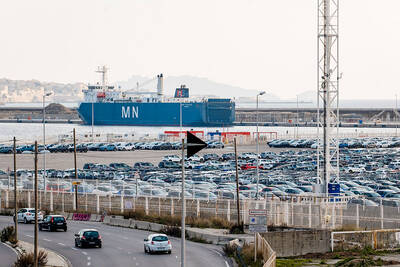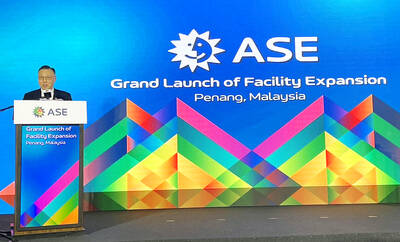Council for Economic Planning and Development (CEPD) Chairwoman Christina Liu (劉憶如) said yesterday that escalating tensions between the two Koreas could have a negative effect on Taiwan and that the government would be hard pressed to fulfill its “6-3-3” pledge by 2012.
“In my opinion, [the tensions between] South Korea and North Korea will have the most impact on Taiwan’s economy in the short term given our geographical proximity and robust trade interaction,” Liu said in her first appearance as council chief at a question-and-and-answer session in the legislature.
Liu was responding to questions by Chinese Nationalist Party (KMT) Legislator Ting Shou-chung (丁守中) on which international risks posed the greatest threat to Taiwan: tensions in the Korean Peninsula, the eurozone debt crisis, an Asian asset bubble or Western countries’ fragile economic recovery.
Liu said that if tensions between the two Koreas continued to escalate, it would have a negative impact on Taiwan’s economic development as international investors might withdraw from Asian markets, sending local stock and currency markets tumbling.
“There is no denying that when Asia encounters a problem — it doesn’t matter which country it is — international funds normally pull out [of the regional market],” Liu said.
She said the local stock market was very sensitive to global disturbances and Taiwan was an “unwitting victim” of the Korean crisis, referring to local stocks nose-diving on Monday.
However, Liu said that as Taiwan and South Korea are in neck-and-neck competition in the DRAM, LED and flat-panel industries, a silver lining in the Korean crisis was that a share of the foreign direct investment that was intended for South Korea could be diverted to Taiwan.
Liu also told lawmakers that except for economic growth likely expanding by 6 percent this year, it would be difficult to lower unemployment to below 3 percent and to raise annual per capita income to US$30,000 by 2012.
She was referring to President Ma Ying-jeou’s (馬英九) “6-3-3” campaign pledge to achieve annual GDP growth of 6 percent, annual per capita income of US$30,000 and to lower unemployment rate to below 3 percent during his term in office.
“Based on the current situation, I think it would be hard to achieve the ‘6-3-3’ goal by 2012,” Liu said, blaming the global financial crunch in 2008 that took its toll on the nation’s economy.
“No one had expected an outbreak of the financial crisis when the economic policy was made,” she said.
Calling on the government to remain prudent in dealing with structural unemployment, Liu said the council would strive to lower the jobless rate, which hit 5.39 percent last month, to below 5 percent by the end of this year.

Taiwan Semiconductor Manufacturing Co (TSMC, 台積電) yesterday said that its investment plan in Arizona is going according to schedule, following a local media report claiming that the company is planning to break ground on its third wafer fab in the US in June. In a statement, TSMC said it does not comment on market speculation, but that its investments in Arizona are proceeding well. TSMC is investing more than US$65 billion in Arizona to build three advanced wafer fabs. The first one has started production using the 4-nanometer (nm) process, while the second one would start mass production using the

A TAIWAN DEAL: TSMC is in early talks to fully operate Intel’s US semiconductor factories in a deal first raised by Trump officials, but Intel’s interest is uncertain Broadcom Inc has had informal talks with its advisers about making a bid for Intel Corp’s chip-design and marketing business, the Wall Street Journal reported, citing people familiar with the matter. Nothing has been submitted to Intel and Broadcom could decide not to pursue a deal, according to the Journal. Bloomberg News earlier reported that Taiwan Semiconductor Manufacturing Co (TSMC, 台積電) is in early talks for a controlling stake in Intel’s factories at the request of officials at US President Donald Trump’s administration, as the president looks to boost US manufacturing and maintain the country’s leadership in critical technologies. Trump officials raised the

‘SILVER LINING’: Although the news caused TSMC to fall on the local market, an analyst said that as tariffs are not set to go into effect until April, there is still time for negotiations US President Donald Trump on Tuesday said that he would likely impose tariffs on semiconductor, automobile and pharmaceutical imports of about 25 percent, with an announcement coming as soon as April 2 in a move that would represent a dramatic widening of the US leader’s trade war. “I probably will tell you that on April 2, but it’ll be in the neighborhood of 25 percent,” Trump told reporters at his Mar-a-Lago club when asked about his plan for auto tariffs. Asked about similar levies on pharmaceutical drugs and semiconductors, the president said that “it’ll be 25 percent and higher, and it’ll

CHIP BOOM: Revenue for the semiconductor industry is set to reach US$1 trillion by 2032, opening up opportunities for the chip pacakging and testing company, it said ASE Technology Holding Co (日月光投控), the world’s largest provider of outsourced semiconductor assembly and test (OSAT) services, yesterday launched a new advanced manufacturing facility in Penang, Malaysia, aiming to meet growing demand for emerging technologies such as generative artificial intelligence (AI) applications. The US$300 million facility is a critical step in expanding ASE’s global footprint, offering an alternative for customers from the US, Europe, Japan, South Korea and China to assemble and test chips outside of Taiwan amid efforts to diversify supply chains. The plant, the company’s fifth in Malaysia, is part of a strategic expansion plan that would more than triple